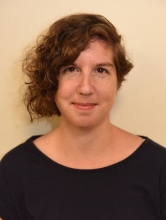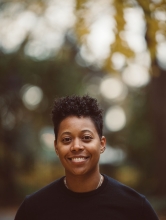By Jules Csillag and Lindsey Foster
Words and terms have power–the power to harm, exclude, unite, and even heal. Thus, we'd like to begin by establishing shared terms. The legal and educational classification of students with Individualized Education Plans (IEPs) and 504 plans is "students with disabilities." They also refer to “students with disabilities” as having "health impairments." Throughout this series and generally, we use the term "disabled." We do so to highlight a social context, to make apparent that exclusion is by design–that schools are disabling by being institutions that uphold and perpetuate ableism. As described by Dr. Subini Annamma (she/her), "being dis/abled [author's spelling] is not simply a fact that people carry with them, but a fluid process dependent upon social context." We also use "disabled" to refer to an identity. People should be able to define themselves, and disabled people are not a monolith. In learning from Disability Justice advocates, we notice that most people use the word "disabled" to describe themselves. That self-definition can allow for community connections and movement building, as is the case with the #BlackDisabledLivesMatter hashtag, originated by Keri Gray (she/her) and Justice Shorter (she/her).
Disability justice differs from disability rights in that it seeks (collective) liberation for people across ability, race, gender, gender identity, class, immigration status, etc. As Patty Berne (she/they) has stated, "it's not about rights [that] can be 'granted' and taken away…[it's] based in our dignity and our integrity and wholeness as communities." Meaningfully, disability justice recognizes that ableism and racism are interconnected and must be fought intersectionally. There are many examples of this interconnectedness within our schools, particularly in the last year and a half. Some–like the School-prison Nexus–are beyond the scope of this series. Instead, we'll focus on how COVID-19 further exposed inequities in schools, and what the last year and a half has taught us about the potential of learning spaces, as informed by Disability Justice advocates. We'll focus on what educators can do within their spheres of influence by providing concrete suggestions for their learning spaces.
During the height of the COVID-19 global health pandemic, school districts across the country shifted to virtual learning platforms, with some districts incorporating hybrid alternatives. While this change to remote learning impacted all students, disabled students and students of color were negatively and disproportionately impacted. The services that disabled students typically received, including one-on-one interactions with teachers, modified classroom settings and instructional time, and multiple teachers in a classroom, were not available through remote learning. According to survey data from the National Center for Education Services, only 1 in 5 parents of children with disabilities reported that their children were receiving all the services to which they were entitled.
Additionally, the lack of available technology options and quality internet access for many students resulted in further difficulties, particularly for low-income students and students of color. Some large school districts ran out of devices or did not organize equitable device pick-ups for all students, which meant some students had to share devices with their siblings. The failures of the shift to remote learning disproportionately affected Black students, especially those with learning disabilities. Isaiah Elliott, a 12-year-old boy with ADHD, was suspended from virtual school after his teacher reported that he was playing with a toy gun during a virtual class. Not only did Isaiah’s school discipline him, they also contacted the police who came to his home. This involvement of local police endangered Isaiah and could have resulted in his murder, as was the case with Tamir Rice.
It is evident that virtual schooling did not work for all students and disproportionately impacted certain historically marginalized students. Furthermore, the shift was not solely difficult for students and families; educators and administrators also struggled to keep up. Many teachers were not prepared or trained in the virtual learning platforms and had difficulty shifting their lesson plans and classroom practices to a remote setting which resulted in teachers feeling overworked and unsupported.
In parts 2 and 3 of this series, we'll share themes from remote learning, social justice movements, and the COVID-19 pandemic, as they relate to education and disability. These lessons are partially based on the inequities described above, and the connection and learning possibilities that were missed in the past year and a half. We also engage "freedom dreaming [as an essential part of creating] a liberating alternative" and took this as an opportunity to envision what schools can look like when everyone is supported, cared for, and free.
Part 2 explores how schools could be spaces for liberation, resistance, and joy, where educators are in solidarity with their students, celebrate their students, and co-create varied opportunities for learning and being in community.
Part 3 explores how schools can expand their definitions of access, where educators embrace students' autonomy, honor difference, and model interdependence.



